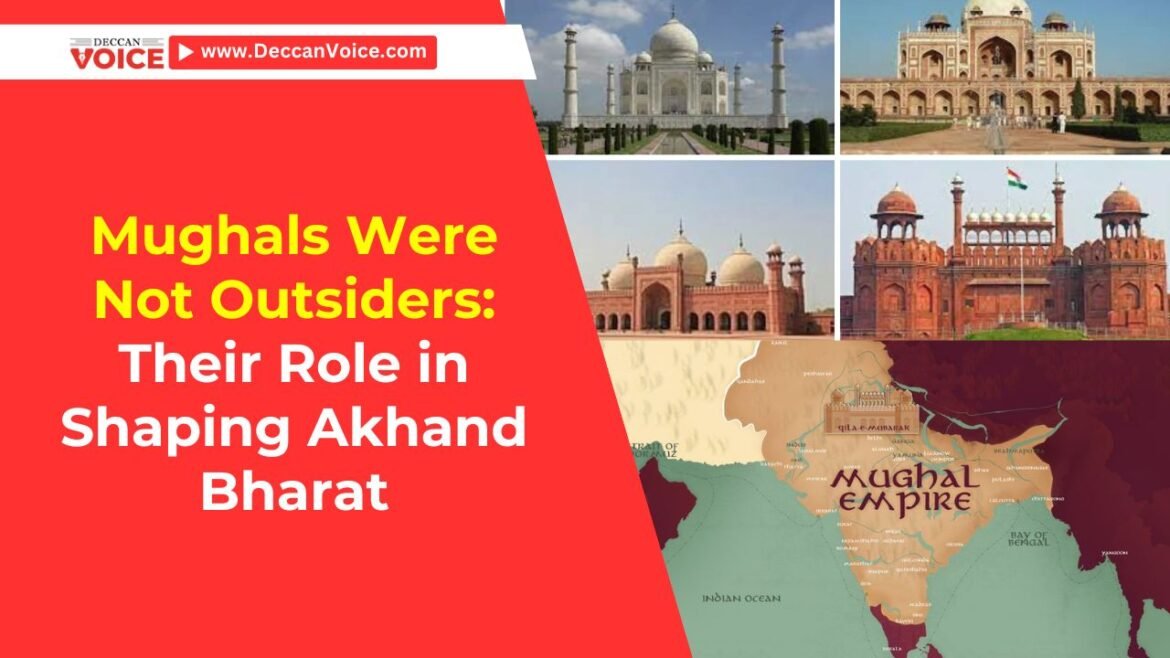Table of Contents
History is not merely about who ruled and when, but how that rule shaped the culture, identity, and civilization of the land. When it comes to the Mughals, much of the discourse today is shaped by political narratives rather than historical facts. A closer look reveals that the Mughals, though originally Central Asian in lineage, became deeply rooted in the Indian soil — politically, culturally, and emotionally.
They were not outsiders who came to loot and leave. Instead, they contributed immensely to what many today refer to as Akhand Bharat — a civilizational idea of a unified Indian subcontinent.
The Mughals: Not Just Rulers, But Nation-Builders
The Mughal Empire, which ruled large parts of the Indian subcontinent from the early 16th to the 18th century, played a pivotal role in unifying fragmented regions into one administrative, economic, and cultural system. Their contributions laid foundations that lasted well into the colonial and post-colonial eras.
Key Mughal emperors like Akbar, Jahangir, Shah Jahan, and Aurangzeb built institutions, patronized arts, codified laws, and developed infrastructure that connected diverse regions of India.
Cultural and Religious Syncretism: A Mark of Indian Identity
Emperor Akbar is perhaps the most shining example of religious tolerance in medieval India. His policy of Sulh-e-Kul (peace to all) encouraged dialogue among Hindus, Muslims, Jains, and Christians. He abolished the jizya tax on non-Muslims and included Rajputs and other Hindu leaders in his administration.
This was not an act of foreign diplomacy — it was Indian governance, rooted in diversity.
Architectural Marvels That Define India
From the Taj Mahal in Agra to Red Fort in Delhi, from Humayun’s Tomb to Fatehpur Sikri, the architectural brilliance of the Mughal era is still the face of Indian tourism and heritage. These monuments are not alien structures — they are icons of India’s artistic and cultural golden age.
Moreover, they weren’t just palaces — many of these structures were administrative buildings, caravanserais (rest stops), and mosques built to serve the public, not merely the royal family.
Administrative and Economic Foundations
The Mughal land revenue system (Zabt) introduced during Akbar’s reign became the basis of future British and Indian land administration. They standardized coinage, weights, and measures. Trade flourished under their rule, and cities like Delhi, Agra, Lahore, and Ahmedabad became major commercial hubs.
The Grand Trunk Road — revitalized under Sher Shah Suri and maintained by the Mughals — connected the Indian subcontinent from Bengal to Kabul, fostering trade and unity.
Were the Mughals ‘Foreigners’? Let’s Reconsider
It’s essential to ask — what defines a “foreigner”?
Babar came from Central Asia, yes, but within a generation, his descendants were born and raised in India.
Mughals married Indian women, built Indian cities, died on Indian soil, and even spoke Indian languages like Persian, Urdu, and Hindavi.
Their courts were filled with Indian poets, painters, generals, and ministers.
They didn’t rule from abroad — they lived and died in India. To label them as “outsiders” is to ignore over 300 years of integration and contribution.
Modern Misinterpretations and Historical Injustice
Today, some ideologically-driven narratives try to discredit the Mughals as tyrants or occupiers — often cherry-picking events or decontextualizing conflicts. But history must be viewed in full, with all its complexity.
Just as we do not blame British rule on all English people today, we must not stereotype the Mughals or deny their Indian legacy.
Conclusion: Mughals as Part of the Indian Fabric
India’s strength lies in its diversity — not only of religion and language but also of history. The Mughals, like many other dynasties, were part of that diversity. Their role in shaping the culture, economy, governance, and architecture of India cannot be dismissed.
To call them “outsiders” is not just historically inaccurate — it’s a disservice to India’s pluralistic legacy.



